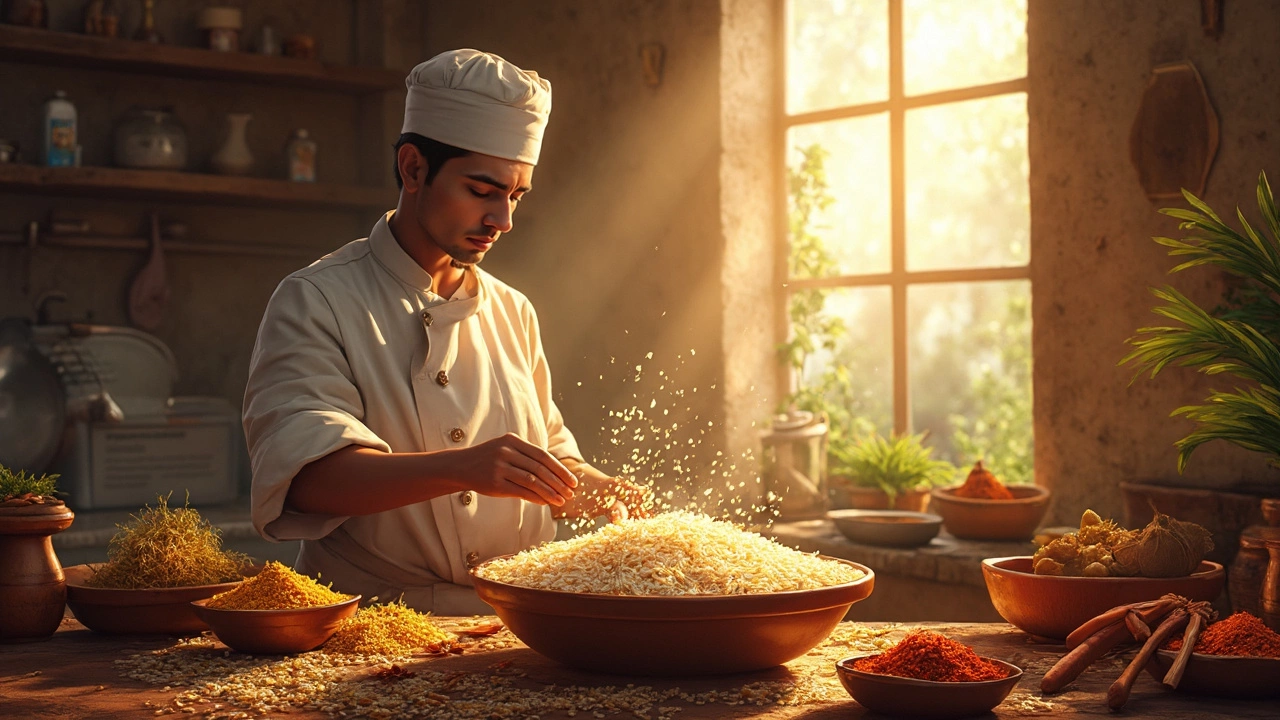Essential Basmati Rice Tips for Perfect Indian Meals
When working with Basmati Rice, long, fragrant grains native to the Indian subcontinent that stay separate and fluffy when cooked. Also known as Asian long-grain rice, it thrives on simple steps like rinsing, soaking, and the right water ratio. Soaking, pre‑soaking grains in water to hydrate the starches (sometimes called pre‑soak) reduces cooking time and helps the grains elongate. Rinsing, washing rice until the water runs clear (also known as cold‑wash) removes excess surface starch that would otherwise make the rice gummy. Finally, a precise Water Ratio, the amount of water per cup of rice (sometimes called liquid‑to‑grain proportion) is the key to that fluffy texture you crave.
Why Rinsing and Soaking Matter
Rinsing cuts the sticky coating that slips off during cooking, so each grain stays separate. Soaking lets the grain absorb moisture evenly, which means the interior cooks at the same speed as the exterior. The combination of both steps forms a solid foundation for any basmati rice tips guide. Skipping them often leads to clumpy rice or uneven firmness, especially in dishes like biryani or pulao where texture is the star.
Once the grains are clean and hydrated, the water ratio takes over. A classic rule of thumb is 1 cup of basmati to 1.5 cups of water for stovetop cooking, but altitude, pot type, and personal preference can shift that number. Using a tight‑fitting lid traps steam, while a loose lid lets moisture escape, both affecting the final fluffiness. Adjust the ratio by a tablespoon or two if you notice the rice is too dry or too wet after the first try.
Heat control is the next piece of the puzzle. Start with high heat to bring the water to a rapid boil, then immediately lower to a gentle simmer. This two‑stage method prevents the grains from breaking apart while still allowing the steam to fully cook the interior. Cover the pot, avoid peeking, and let the rice sit off the heat for five minutes before fluffing. The resting period lets any remaining moisture redistribute, finishing the cooking process without extra heat.
Beyond stovetop, pressure cooking offers a shortcut for busy cooks. A 15‑minute pressure cycle at low pressure yields the same fluffy result, but you must reduce the water slightly—about 1.25 cups per cup of rice—because the sealed environment doesn’t let steam escape. Whether you use a traditional pot or a modern Instant Pot, the core principles of rinsing, soaking, and correct water ratio stay the same.
Storage is often overlooked but crucial for keeping basmati at its best. Once cooked, cool the rice quickly, then store in an airtight container in the fridge for up to three days. Reheat gently with a splash of water and a covered pan to restore moisture. If you need to keep uncooked rice longer, store it in a cool, dry place away from sunlight; humidity can cause the grains to lose their aroma and texture.
Now that you’ve got the science down, you’re ready to apply these tips to any Indian rice dish. Below you’ll find a hand‑picked collection of articles that dive deeper into specific recipes, flavor pairings, and advanced techniques. From biryani secrets to quick weekday pulao, the posts will expand on the basics and give you practical steps to elevate every grain on your plate.

Soaking Basmati Rice: How Long is Just Right for the Perfect Biryani?
Soaking basmati rice before cooking is a simple yet essential step for making the perfect biryani. This process allows the rice grains to expand properly, ensuring a fluffy and aromatic dish. Generally, soaking for 30 minutes to 1 hour is ideal, but various factors like rice type and personal preference can influence this time. Understanding the proper soaking technique enhances the flavor and texture of your biryani, helping you achieve restaurant-quality results at home.